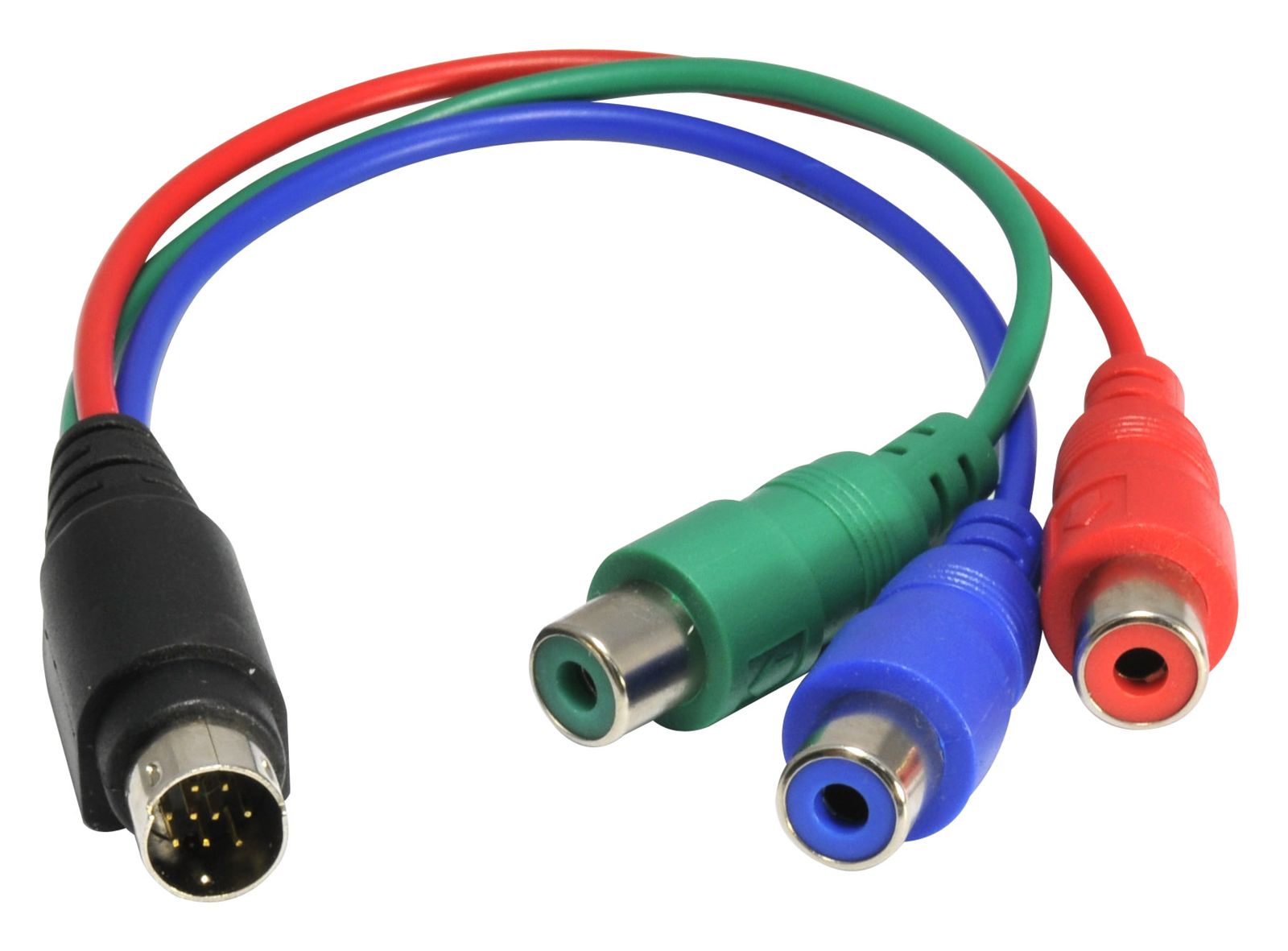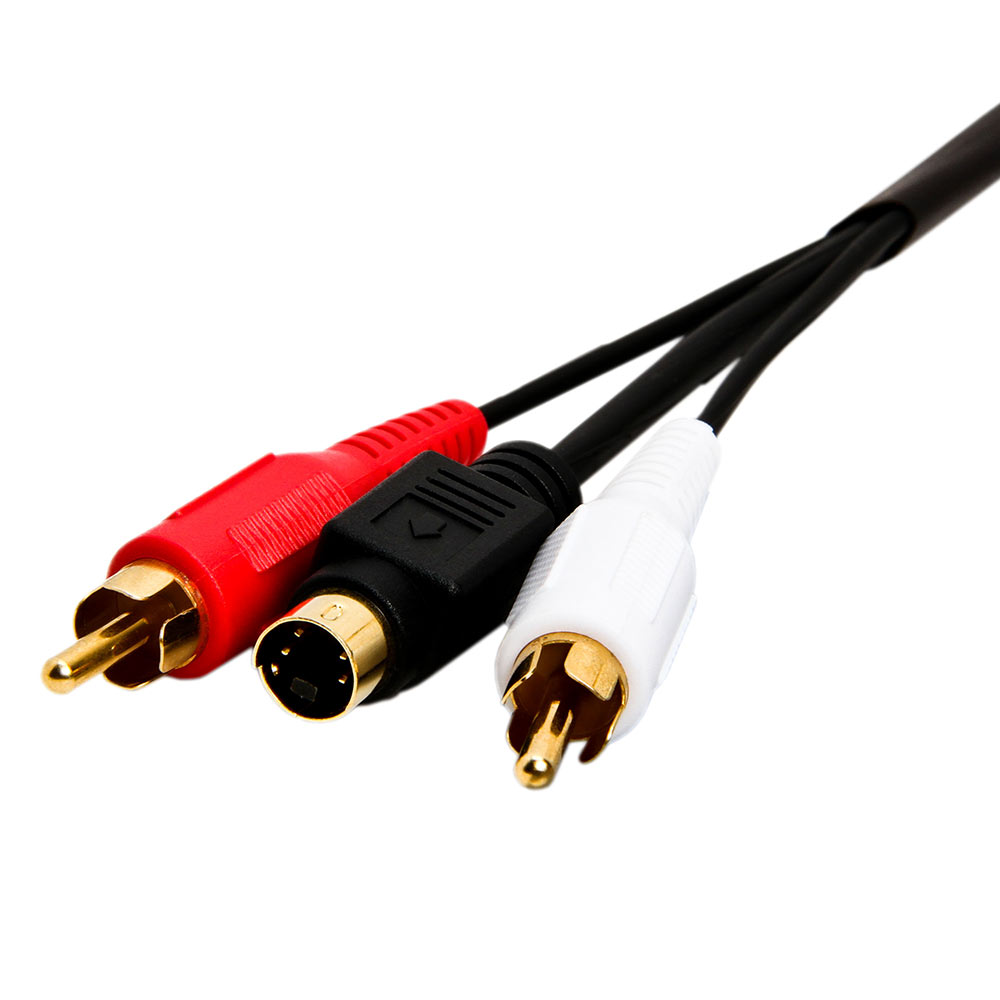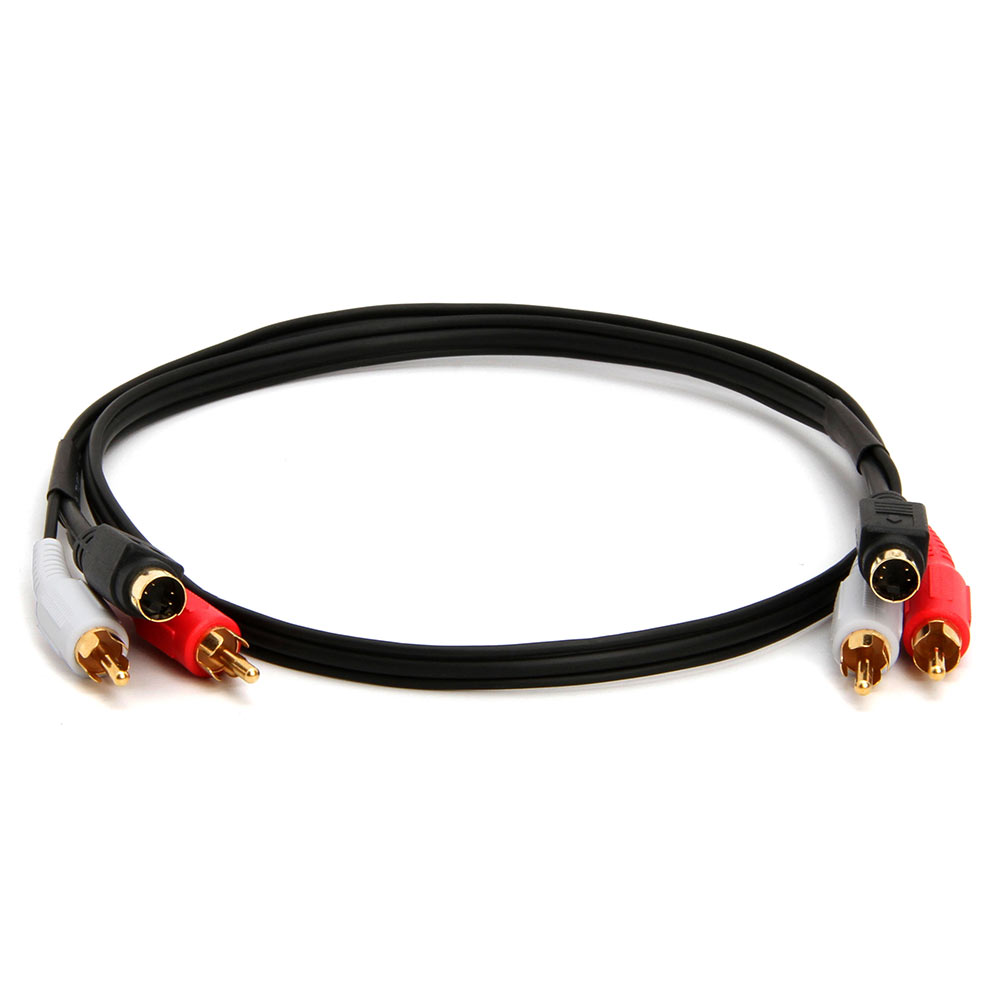S-Video Cables
S-video is the name commonly used for Separate Video or Y/C. the video signal is carried through special cables and does not involve any audio transmission. The signal carries the typical standard video signals that can be 480i or 576i in resolution. Video signals are encoded on two basic channels: luminance which shows the intensity of the video and is denoted by ‘Y’ and chrominance which is used for defining color and denoted by ‘C’.
S-Video cables can use different types of connectors but the most common type of connectors used with these video cables is a 4-pin connector. If a device does not have a 4-pin plug then it is possible to use a 7-pin connector cable. These connectors and plugs are usually available with most professional S-VHS devices. Even though there are other connectors like BNC and composite available, the Y/C signals are compatible over devices making it easy to switch wires if and when needed.
What are S-Video Cables?
We have already established an overview of what signals S-video cables carry and also the type of connectors that are used with these cables specifically. Now, to understand what each video signal comprises of in detail, here is an over view of how and what signals are carried through the wires to the 4-pin connectors.
To maintain the quality of a video signal, luminance and chrominance are carried on different wires with ground wires and synchronized signals for each category. S-Video has a greater bandwidth for luminance as compared to composite video signals. However, the signals are carried in the exact same manner as for composite wires using vertical and horizontal synch pulses.
The increase in bandwidth is possible because signals are luminance and chrominance signals are carried over two different wires. Unlike composite videos where both video signals are carried over one wire and most of the bandwidth is set aside for the chrominance signals.
S-Video cables divide the signal, carrying luminance in one wire and the two separate color signals in one wire eliminating the dot crawl issue of composite video cables. It also reduces the crosstalk that can occur in composite video cables and signals. Still the chrominance signals have a limited bandwidth when compared with component video cables. The S-Video cables also provide a better image quality and also have most of the video intact when the video signals are passed through the cable to the device resulting in a better video quality as compared to composite video cables.
Limitations of S-Video Cables
S-video cables can be described as dissonance reducing; they are better than composite video cables but cannot surpass the advantages of component video signals and cables. Obviously when two separate wires are used for video signals, the device would require two integrated circuits that will be used for input of video signals that will be processed over the cable. When compared to component video cables and other market offerings that provide much better quality, S-Video cables provide limited video signal strength.
•The video quality produced by S-Video cables is much poorer because the chrominance is carried over a single wire and has a limited frequency bandwidth. There is also a possibility that the signal source might have limitations of its own.
•Since both chrominance components are carried over one wire, the color scheme followed by the signal has to be encoded over one of the three standards: PAL, SECAM and NTSC. These signals are encoded in a slightly different manner as compared to other video cables. To have the signals encoded and decoded with a good quality it is important to have the devices that are connected with S-Video cables compatible with S-Video signal format or color and luma.
Strengths of S-Video Cables
Since it is in between composite and component video cables it is obvious that the cables and S-Video signal format has a few strengths that make the cable and video format better than composite video cables.
S-Video signals require lesser time in processing video signals when connected with analog television sets. The cables can be used for digital devices like modern HDTVs and computer devices but the processing speed is comparatively slower because of the added complexity of processing. Even though the resolution and noise resistance of S-Video signals is higher compared with digitally processed video signals, the image quality and colors are much better than digital signals.
Variations in the Type of Connectors
4-pin connectors are the most common type of S-Video plugs and connectors that are available. There are however a few cases where a 4-pin connector cannot be used. In such cases, S-Video cables that have 7-pin or 9-pin connectors are used.
7-pin connectors are used mostly with computers. These cables are compatible with standard 4-pin devices. The three extra points can be used for composite video signal or can be used for interfaces like I2C. If it is not used for either purpose than the pins need to be grounded to ensure efficient transmission of video signals.
9-pin connectors are mostly used with devices that work with different graphics techniques. Unlike a 7-pin connector, it is not easy to have a 9-pin S-Video cable connected to a standard 4-pin cable. The plug will not fit in the device and can be destroyed as the pins might bend and break.
S-Video Signal Conversion
S-Video signals can be converted to a better or lower quality depending on the devices that are connected with the cable. A few simple additions can translate S-Video signals to composite video signals. Other analog conversions also require very less work. When it comes to digital processing however more processing is required as it is a complex process to change the signals to digital.
S-Video cables can be easily connected to S-VHS VCRS, Digital Satellite Receivers and DVD players. The cables deliver the standard 75 ohms impedance (resistance) and are available in varying sizes; from as small as 3 feet to as long as 100 feet.






